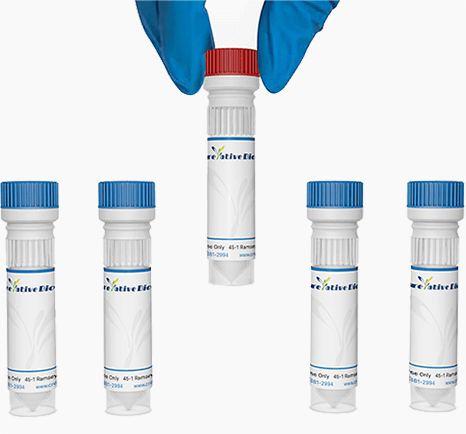Key Details
| Catalog | MAS-0124-YJ21 |
| Applications | Neut; WB |
| Host | Mouse |
| Reactivity | B. burgdorferi |
| Clonality | Monoclonal |
| Conjugations | Conjugation could be customized |
| Sub CAT. | Applications | Clone | Conjugations | Endotoxin Level | Size | Quantity | |
|---|---|---|---|---|---|---|---|
| MAS-0124-YJ21-A | Neut | A173 |
Successfully!
|
||||
| MAS-0124-YJ21-B | Neut, WB | A201 |
Successfully!
|
Overview
Properties
Target
Overview
| Description | Clones A173 and A201 are Mouse monoclonal IgGs recognize B. burgdorferi OspA. A201 binds to the three surface-exposed loops of the C-terminal domain of OspA that are on the tip of the elongated molecule most distant from the lipid-modified N-terminus. A201 could neutralize B. burgdorferi infectivity. |
| Reactivity | B. burgdorferi |
| Applications | Neut; WB |
| Host | Mouse |
| Immunogen | B. burgdorferi Outer surface protein A |
| Isotype | Both two: Mouse IgG2a |
| Clonality | Monoclonal |
| Clone | A173; A201 |
Properties
| Expression Host | HEK293F/CHO |
| Conjugations | Conjugation could be customized |
| Purification | Protein A/G affinity purified is the regular method |
| Purity | SDS-PAGE> 95% |
| Endotoxin Level | Endotoxin level could be customized |
| Form | Liquid (frequently-used) or lyophilized |
| Concentration | About 1mg/ml. There are differences between batches. Special concentration could be customized. |
| Sterility | 0.2 μM filtered |
| Buffer | See the Datasheet |
| Storage | See the Datasheet |
Target
| Target | B. burgdorferi OspA |
| Alternative Names | Outer surface protein A; OspA; Outer-Surface Protein A; OSPA; Borrelia burgdorferi; B. burgdorferi |
| Gene ID | 8319333 |
| Introduction | Outer-Surface Protein A (OspA), a lipoprotein from Borrelia burgdorferi encoded on its Plasmid lp54, is a major component of the spirochete's extracellular matrix. OspA probably serves as a lipid-anchor. The spirochetes migrate from the tick midgut during feeding to its salivary glands and are thus transmitted to the mammal host. This transition may be facilitated by changes in expression of some B. burgdorferi genes. Upon transmission of the spirochete from the Ixodes tick to mammalian host, the transcript level of OspA can change. It is believed that expression of the various proteins associated with the spirochete may be regulated by the changes in tick life cycle, changes in conditions during tick feeding (such as temperature, pH, and nutrients) and/or in coordination with the course of infection of the mammal host. B. burgdorferi can attach to (and also differentially express antigens in) diverse tissues within the vertebrate host and the tick vector, suggesting that physiological facto. |
| Organism | Spirochete; Bacteria |
| Related Disease | Lyme disease |
| Infections Route | Cutaneous |
Online Inquiry
